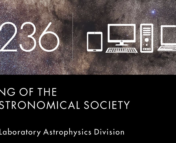Title: Ultradense Gases beyond Dusty Torus in a Partially Obscured Quasar
Authors: Zhenzhen Li, Hongyan Zhou, Lei Hao, Xiheng Shi
First Author’s Institution: Key Laboratory for Research in Galaxies and Cosmology, Shanghai Astronomical Observatory, Chinese Academy of Sciences, Shanghai, China
Status: Submitted
Behind the thick wall of dust and gas
Starting from their birth, supermassive black holes (SMBHs) co-evolve with their host galaxies through active galactic nuclei (AGNs) feedback. In the central region of the obscured AGN, a donut-shaped thick wall of dust and gas surrounds the accretion disk. This wall, referred to as the “dusty torus”, separates the broad emission line (BEL) region and the narrow emission line (NEL) region. As a result, the dusty torus can absorb most, if not all, of the BELs.
The scale of the torus region (pc-scale to ~100 pc) we are talking about here is quite small compared to that of the entire host galaxy. Direct observations are therefore challenging. However, it is very important to understand what occurs in the central region because AGN outflows can strongly affect galactic evolution from the center.
Today’s paper provides us with more information about AGN outflows.
Although it seems we can only observe NELs and suppressed BELs outside of the dusty torus, the authors show that there is more to see. When the authors pointed the Hubble Space Telescope (HST) towards a partially obscured quasar, J1516+1900, aside from the expected NELs and BELs, they also found a group of special lines in the ultraviolet (UV) spectrum. Unlike BELs and NELs, these unusual lines in the circumnuclear region have intermediate widths with FWHM about 1900 km/s, which may shed light on what is going on behind the curtain. Now the question is where these special intermediate emission lines (IEL) come from.
The unusual intermediate emission lines (IELs)
When the authors used a typical quasar model with dust extinction to fit the spectral energy distribution (SED) of their obscured quasar, they first noticed an excess in the far-UV continuum. After checking the X-ray luminosity, they found that the observed obscuration is stronger than the theoretical calculation. The photometry suggests that a blob of gases is located beyond the torus and is absorbing extra photons!
After a close examination of the individual emission lines in the UV (shown in Figure 1), the authors found that the broad components of UV emission lines are completely missing, leaving only the intermediate-width components. The authors then separated the IELs into two groups: a major group that is relatively still, and a minor group with blueshift. Both groups show little extinction, which places the origin of the IELs outside of the dusty torus.
Since both the blob of gases and the IEL region are beyond the torus, the question then became whether the IELs originated from the gases instead of photoionization by the central AGN. To answer this question and find the origin of these special lines, the authors simulated the locations of IEL regions. Their results suggest that the suspicious gaseous blob could be an ultradense region filled with shock-heated gases. Therefore, this region is dense and warm enough to produce the unabsorbed IELs in the UV band. On the other hand, even with a sophisticated model, AGN cannot ionize those hydrogen particles without extinction.
The production process of the IELs
After relating IELs to the ultradense gases beyond the torus, the authors demonstrate the production of these weird IELs in detail. Figure 2 shows an illustration of what happens in the circumnuclear region of quasar J1516+1900. Based on the reddened SED fitting model, it is certain that a dusty torus surrounds the active central SMBH, blocking our view to the inner region. As a result, there is barely any signal coming from the BEL region.
Although the outflows originate from the inner accretion disk, these gases do not want to be confined and silenced in the torus like BELs. Therefore, once the outflows are pumped with energy, they collide into whatever obstacles are standing in their way and try to break through.
Since the quasar is partially obscured and the torus is clumpy, some outflows are able to get through the gaps. On their way out, these outflowing gases bump into the surrounding isolated clouds, creating a shock. This shock further heats the gases and gives rise to the blue-shifted minor IELs.
Unfortunately, not all of the outflows can make it out easily. Those that are unable to escape through the gaps go straight head-to-head with the huge dense torus. In this case, the outflowing gases end up violently colliding into the inner wall and fail to escape. However, during the collision, the high kinetic energy ignites a giant spark visible to the outside. This spark is the unshifted dominating major IELs.
If these assumptions are true, the IELs may provide a direct link between emission-line properties and quasar outflows, a finding that may help astronomers understand the physical processes of the outflows and the effect on the SMBH-galaxy co-evolution.
Featured image: AGN outflows & feedback (Credit: Nature)




